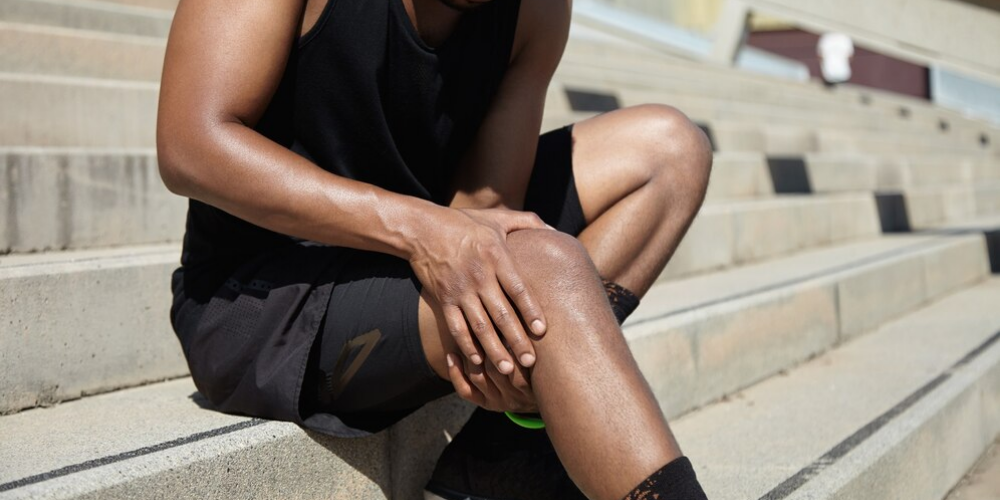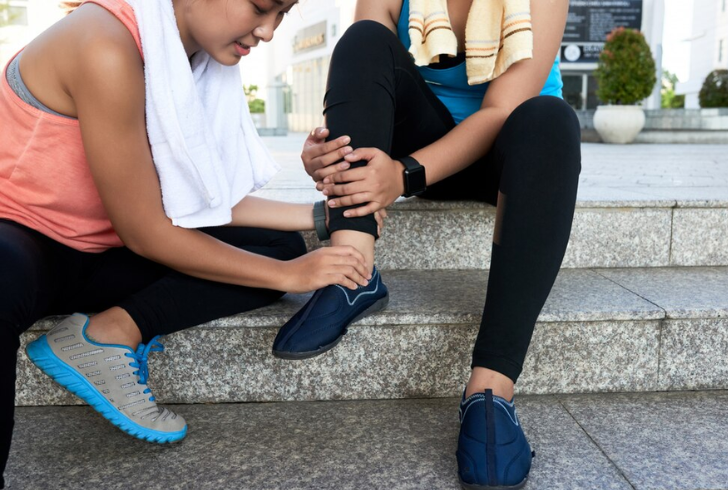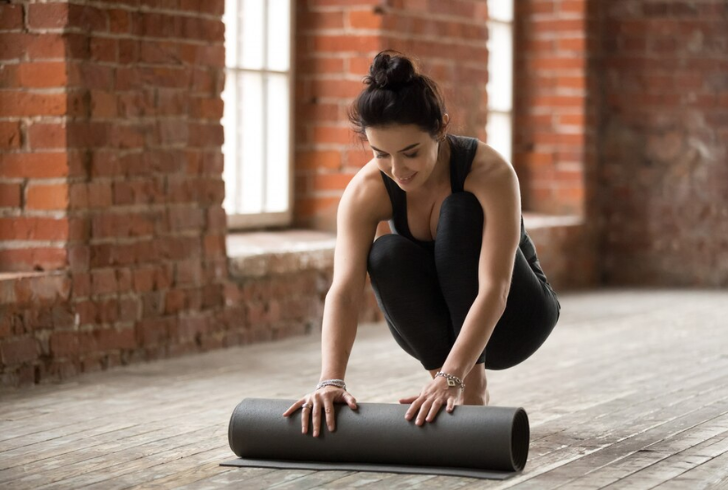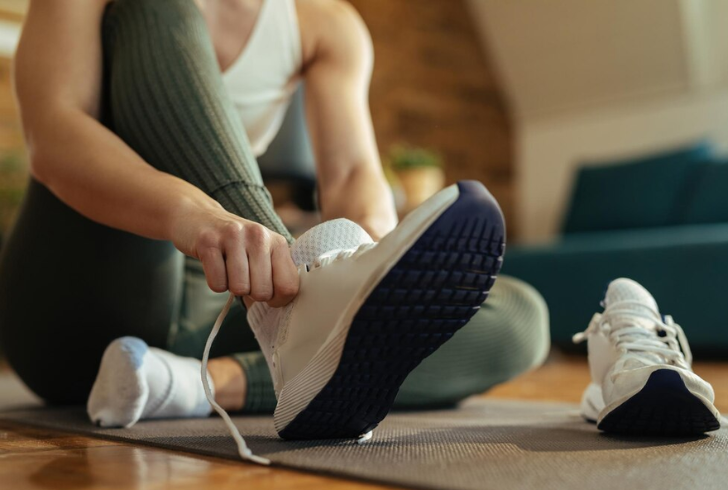
How to Get Rid of Shin Splints? 5+ Effective Ways for Relief

Shin splints can be a real pain—literally. This common overuse injury often affects runners, military recruits, dancers, and athletes who engage in high-impact sports like tennis. Characterized by pain along the front of the leg, shin splints can sideline even the most dedicated fitness enthusiasts. Fortunately, there are several effective methods to treat and prevent shin splints, ensuring you can stay active without discomfort.
So, let’s delve into how to get rid of shin splits and reclaim your stride!
Understanding Shin Splints

Freepik | pressfoto | Shin splints, or medial tibial stress syndrome, are pains along the shinbone (tibia).
Shin splints, also known as medial tibial stress syndrome, refer to the pain that occurs along the shinbone (tibia). This condition is typically caused by repetitive stress on the shinbone and the connective tissues that attach muscles to the bone. Common activities leading to shin splints include running, jumping, and other high-impact exercises performed without adequate stretching or rest.
Common Causes of Shin Splints
- Overuse: Engaging in high-impact activities like running, especially on hard surfaces.
- Sudden Increase in Activity: Rapidly increasing the intensity, duration, or frequency of workouts.
- Improper Footwear: Wearing shoes that lack proper support or are worn out.
- Flat Feet or High Arches: These foot conditions can affect how your legs absorb shock.
RICE Method for Immediate Relief
When shin splints strike, the RICE method is a reliable approach to manage the pain and promote healing.
- Rest: Give your legs a break from high-impact activities. Opt for low-impact exercises like swimming or cycling until the pain subsides.
- Ice: Apply ice packs to the affected area for 15-20 minutes, several times a day. Always wrap the ice in a towel to protect your skin.
- Compression: Use a calf compression sleeve to help reduce swelling and provide support.
- Elevation: Elevate your legs to decrease swelling. Prop them up on pillows or a chair while you’re icing.
How to Get Rid of Shin Splints? Try these 5 Stretches

Freepik | Use a foam roller under your shins, rolling up and down to massage the muscles.
Incorporating regular stretching into your routine can help alleviate pain and prevent shin splints from returning. Here are five essential stretches:
1. Seated Shin Stretch
- How to Do It: Kneel down and sit back on your heels. Lean back slightly, using your hands on the floor for support, and gently press down on your heels.
- Benefits: This stretch targets the muscles at the back of the lower leg, alleviating tension in the shins.
2. Soleus Muscle Stretch
- How to Do It: Stand facing a wall, place both hands on the wall, and step one foot slightly back. Bend both knees slowly to feel the stretch in your lower calf.
- Benefits: This stretch focuses on the deeper calf muscle, helping to relieve shin splint pain.
3. Gastrocnemius Muscle Stretch
- How to Do It: Place your hands on a wall, step one foot back, and keep the leg straight with both feet flat. Lean forward to stretch the upper calf.
- Benefits: Stretching the larger calf muscle can reduce shin splint discomfort.
4. Calf Raises
- How to Do It: Stand on a step with your heels hanging off. Raise up onto your toes, then lower your heels below the step level.
- Benefits: Strengthens the calf muscles, which can help in managing shin splint pain.
5. Foam Rolling
- How to Do It: Use a foam roller under your shins, rolling up and down to massage the muscles.
- Benefits: Foam rolling reduces inflammation and muscle tightness.
Should You Use Pain Relievers? Over-the-counter pain relievers like ibuprofen (Advil), naproxen (Aleve), or acetaminophen (Tylenol) can help manage shin splint pain. However, they should not replace proper treatment methods like stretching, RICE, and appropriate rest.
Preventing Shin Splints

Freepik | Drazen Zigic | Make sure your shoes offer enough support and cushioning for your activity.
While treating shin splints is essential, preventing their recurrence is equally crucial. Follow these preventive measures to safeguard against future bouts of discomfort:
- Invest in Proper Footwear: Ensure your shoes provide adequate support and cushioning for your chosen activity.
- Gradually Increase Activity: Avoid sudden spikes in activity level, and gradually build up intensity to allow your body to adapt.
- Cross Train: Incorporate a variety of exercises into your routine to prevent overuse injuries.
- Replace Shoes Regularly: Don’t overlook the importance of replacing worn-out footwear to maintain proper support and cushioning.
By implementing these strategies, you can minimize your risk of developing shin splints and enjoy a pain-free, active lifestyle.
Conquer Shin Splints and Reclaim Your Active Life
Knowing how to get rid of shin splints is key to staying active and pain-free. By following the RICE protocol (rest, ice, compression, elevation), incorporating regular stretching, and choosing the right footwear, you can effectively manage shin splints and prevent them from coming back. Gradual training and cross-training are also important strategies.
If your pain persists, consult a healthcare professional to rule out more serious injuries. With these steps, you can overcome shin splints and get back to enjoying your favorite activities.
More in Lifestyle
-
`
Polish Government to Rise Minimum Wage By 8% in 2025
The Polish government’s minimum wage is set to increase by 8% in 2025. While workers and unions welcome the move, many...
September 25, 2024 -
`
Kidney Infection: Causes, Symptoms, Prevention & Treatment
Kidney infections – AKA pyelonephritis – are serious health conditions that can lead to severe discomfort. But does kidney infection cause...
September 19, 2024 -
`
What to Do in Ubud, Bali – Top Attractions & Activities
Ubud, the cultural heart of Bali, offers an array of activities that capture the essence of this enchanting island. From exploring...
September 11, 2024 -
`
Important Aspects of Your Health You Should Pay Attention To
When thinking about your health, it’s crucial to consider the key factors that create a solid foundation for your well-being. These...
September 6, 2024 -
`
6 Creative Birthday Party Ideas For Adults
Gone are the days when birthdays were just about cakes and candles. Now, it is all about creating memorable experiences that...
August 28, 2024 -
`
Are Chanel and Johnny leaving Days of Our Lives? Here Are the Facts
Fans of Days of Our Lives have been on the edge of their seats, wondering if Chanel and Johnny are leaving...
August 20, 2024 -
`
How Much Does Massage Business Make? A Profitability Breakdown
Curious about how much does massage business make? The massage spa industry in the United States is a significant sector, with...
August 14, 2024 -
`
How to Stay Healthy During Cold and Flu Season
Cold and flu season can be a daunting time, with the risk of illness looming large. Missing work, classes, or social...
August 9, 2024 -
`
Which US Virgin Island Is the Best for Your Dream Vacation
Choosing the perfect island for your dream vacation can be challenging, but each of the U.S. Virgin Islands offers something unique...
July 31, 2024















You must be logged in to post a comment Login